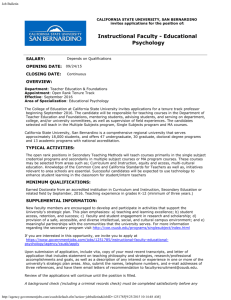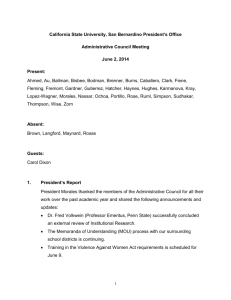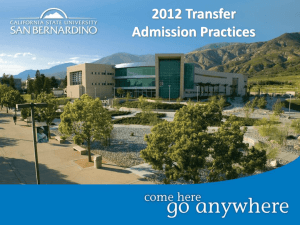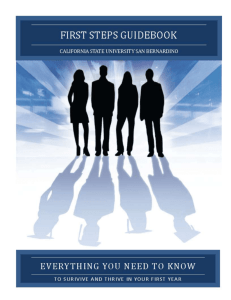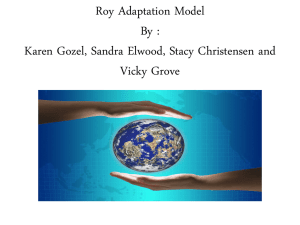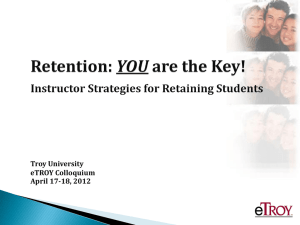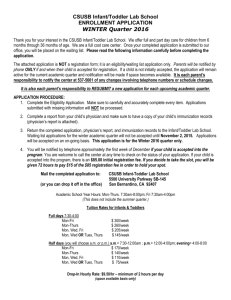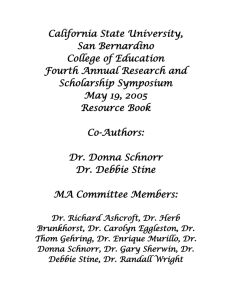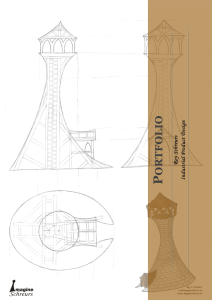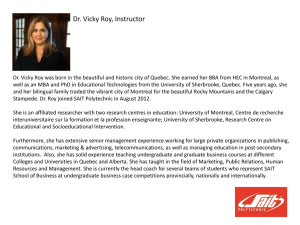Syllabus
advertisement
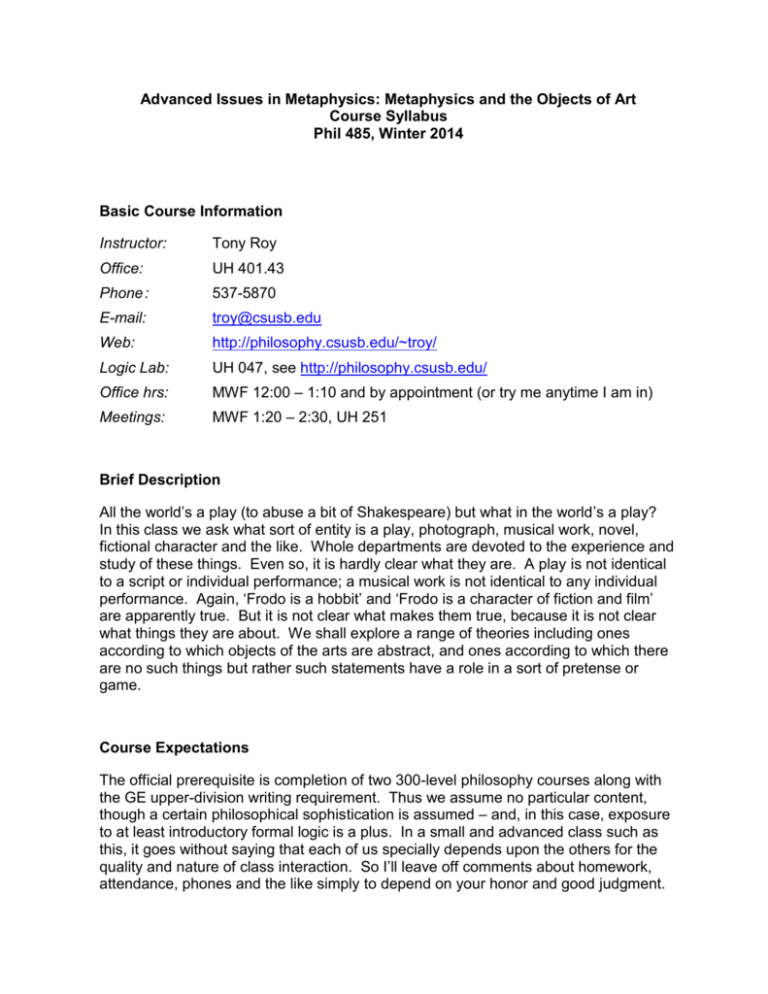
Advanced Issues in Metaphysics: Metaphysics and the Objects of Art Course Syllabus Phil 485, Winter 2014 Basic Course Information Instructor: Tony Roy Office: UH 401.43 Phone : 537-5870 E-mail: troy@csusb.edu Web: http://philosophy.csusb.edu/~troy/ Logic Lab: UH 047, see http://philosophy.csusb.edu/ Office hrs: MWF 12:00 – 1:10 and by appointment (or try me anytime I am in) Meetings: MWF 1:20 – 2:30, UH 251 Brief Description All the world’s a play (to abuse a bit of Shakespeare) but what in the world’s a play? In this class we ask what sort of entity is a play, photograph, musical work, novel, fictional character and the like. Whole departments are devoted to the experience and study of these things. Even so, it is hardly clear what they are. A play is not identical to a script or individual performance; a musical work is not identical to any individual performance. Again, ‘Frodo is a hobbit’ and ‘Frodo is a character of fiction and film’ are apparently true. But it is not clear what makes them true, because it is not clear what things they are about. We shall explore a range of theories including ones according to which objects of the arts are abstract, and ones according to which there are no such things but rather such statements have a role in a sort of pretense or game. Course Expectations The official prerequisite is completion of two 300-level philosophy courses along with the GE upper-division writing requirement. Thus we assume no particular content, though a certain philosophical sophistication is assumed – and, in this case, exposure to at least introductory formal logic is a plus. In a small and advanced class such as this, it goes without saying that each of us specially depends upon the others for the quality and nature of class interaction. So I’ll leave off comments about homework, attendance, phones and the like simply to depend on your honor and good judgment. Text The readings for this course are all listed on the top page of a packet to be distributed on the first day of class. Required readings are either in the packet, or available online (mostly through the library journals database). In addition, a term paper is based on one of three books available both on reserve in the library and as recommended texts at the bookstore. It is just possible to avoid spending money for readings in this course. However, it is likely that you will need to print online articles and/or to purchase at least the text upon which your paper will be based. Grading Grades are based on a series of “reaction” papers (40%), and a term paper in multiple drafts (60%). Reactions: According to the attached schedule, roughly each week is associated with a substantive reading assignment. For each unit, you are responsible for a 3-4 page “reaction” to the reading. The reaction should consist of a summary of some issues from the reading, together with a critique or question about it. These papers will be graded on a 0 – 5 point scale, with scores of 4 – 5 reserved for papers that rise to the level of philosophical discussion, and lower for ones that remain at the level of summary. It will be less important that the critiques are effective, than that you interact intelligibly and philosophically with the material. The reaction score is calculated by dividing points earned by 5 less than points possible: the result is to “forgive” one missing assignment – or if scores are otherwise strong, to treat one as extra credit. These papers will often be the basis of class discussion; thus late assignments will be accepted only with a point deduction corresponding to the number of class meetings the assignment is late. Paper: The term paper is to evaluate one of the three main theories to be studied in our course along with some published criticism of it. The paper is due in four installments. (i) In the week after the introductory portion of the course a brief (1-2 page) thesis statement and a projected bibliography. The bibliography must include at least one of Wolterstorff Works and Worlds of Art, Thomasson Fiction and Metaphysics or Walton Mimesis as Make-Believe, and may include articles from required readings (it may also be supplemented in other ways). Then (ii) a 5 page start to your paper, in which you set up the primary theory to be discussed; (iii) a version of your complete paper; and (iv) the final version. The first part must be approved before other drafts will be accepted. After that, drafts count 5%, 5%, 50% of the total grade. Late papers will be accepted up to the last day of instruction with a 5% deduction, and up to the final exam date with a 10% deduction. Nothing will be accepted after the final exam date. Exceptions require some exceptional excuse (not “I have a lot to do”) and consent of the instructor. Note: You are encouraged to discuss anything, especially reading and reaction papers with other students, the instructor, and/or assistants in the Logic. Lab With this said, all written work is to be your own. Academic honesty is always essential, and particularly so in the give-and-take of philosophy, where the project is to work through and clarify your own views. Plagiarism will result in an automatic F for an assignment, and up to an F for the course along with standard University discipline. Because the issue is so important, be sure you know what plagiarism is! If you have any questions or concerns, feel free to talk things over with me. See also the very nice discussion, “What is Plagiarism” from my website http://philosophy.csusb.edu/~troy/courses.htm and also p. 54 of the CSUSB Bulletin http://catalog.csusb.edu/documents/20122014.pdf#page=54. Order of Instruction (!tentative!) I. Background 1. Roy 2. VanInwagen 3. Lewis 4. Kripke II. Three Theories 5. Wolterstorff 6. Thomasson, Roy + Davidson 7. Walton III. An Alternate Perspective 8. Roy *All readings are listed on the top page of the readings packet* The details There are no adds after the census date. See detailed policies for adds and drops beginning on p. 48 of the CSUSB Bulletin http://catalog.csusb.edu/documents/20122014.pdf#page=48. If you are in need of accommodation for a disability in order to participate in this class, please contact Services to Students with Disabilities at UH 183 (909) 537-5238. Individuals with disabilities should prepare for an emergency ahead of time by instructing a classmate and the instructor. If you require assistance in the event of an emergency, you are advised to establish a buddy system with a buddy and alternate buddy in the class. Readings for Phil 485, Metaphysics and Objects of Art (!tentative!) 1. T. Roy, Properties, Possibilities and Ordinary Things (1.1,1.2), http://rocket.csusb.edu/~troy/main.pdf 2. P. VanInwagen, 308 “Creatures of Fiction,” American Philosophical Quarterly 14 (1977), 299- –––– “Existence, Ontological Commitment, and Fictional Entities,” enclosed. 3. D. Lewis, “Truth in Fiction,” American Philosophical Quarterly 15 (1978), 37-46 4. S. Kripke, Reference and Existence (selection), enclosed. 5. N. Wolterstorff, “Worlds of Works of Art,” Journal of Aesthetics and Art Criticism 35 (1976), 121-132 –––– “Toward an Ontology of Art Works,” Noûs 9 (1975), 115-142 6. A. Thomasson, “The Ontology of Art,” enclosed. –––– “Speaking of Fictional Characters,” Dialectica 57 (2003) 205-223. –––– “Fictional Characters and Literary Practices,” British Journal of Aesthitcs 43 (2003), 138-157 Roy and Davidson, “New Directions in Metaphysics” (partial), enclosed. 7. K. Walton, “Fearing Fictions,” Journal of Philosophy 75 (1978), 5-27 –––– “Fictional Entities,” enclosed. 8. T. Roy Properties, Possibilities and Ordinary Things (2-2.4.2), http://rocket.csusb.edu/~troy/main.pdf Articles with journal citation are available online through Pfau. In addition, Wolterstorff, Works and Worlds of Art; Thomasson, Fiction and Metaphysics; and Walton, Mimesis as Make-Believe are available both on reserve in the library and as recommended texts in the library. A term paper will be based on one of these.
